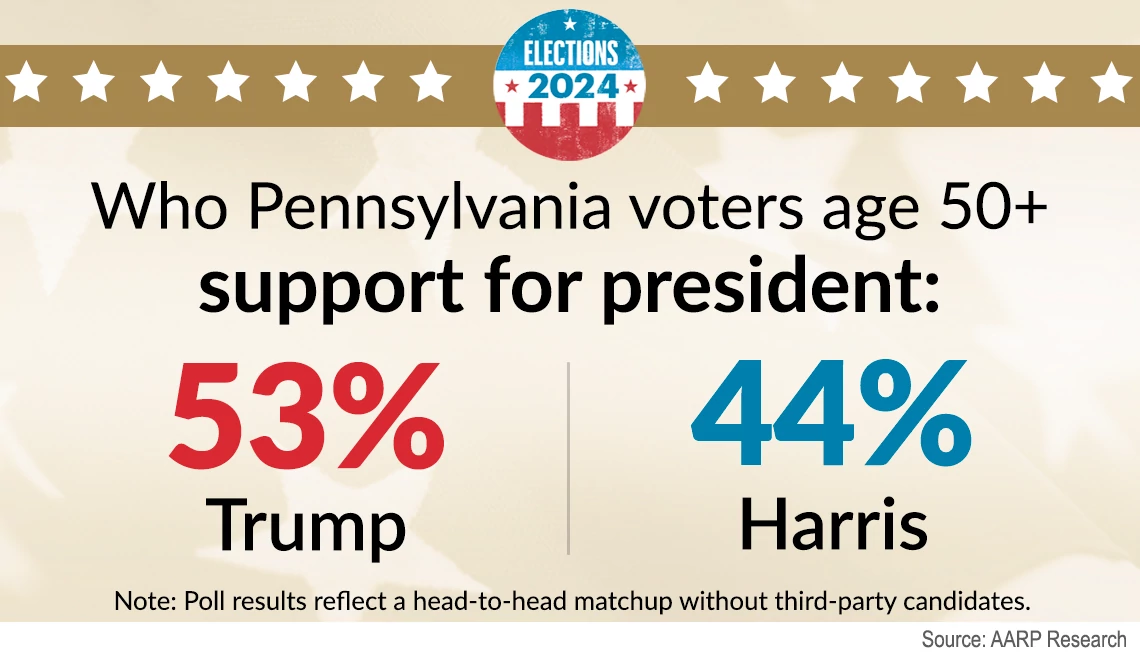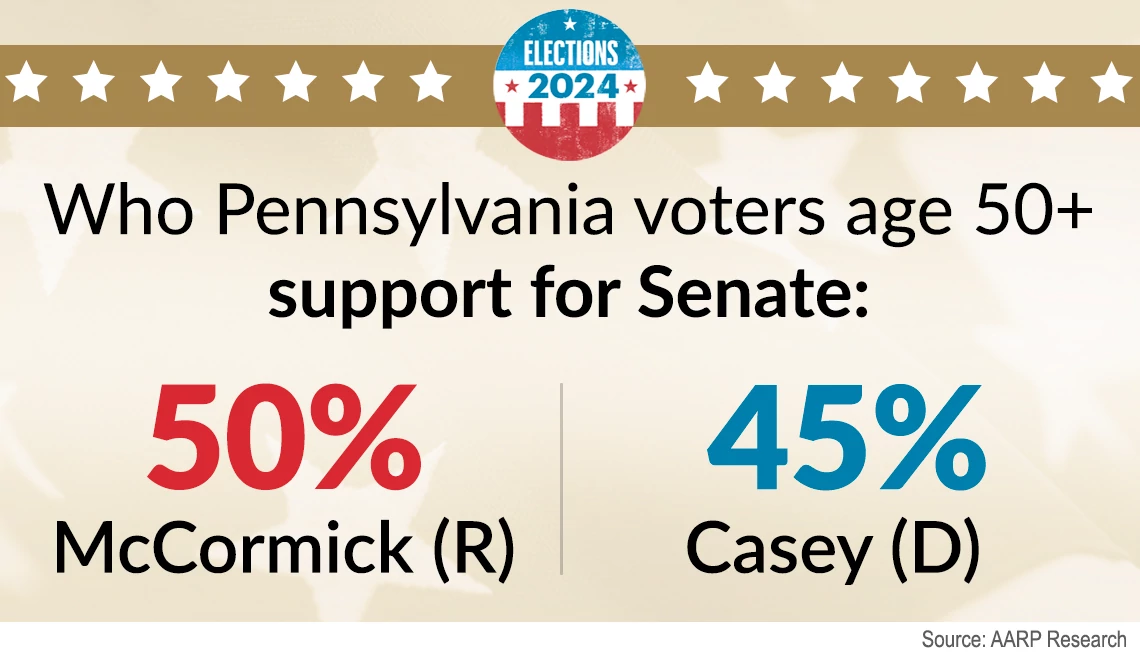AARP Hearing Center


The presidential race continues to be extremely close among voters in battleground state Pennsylvania, with Democrat Kamala Harris leading Republican Donald Trump by 3 percentage points, according to an exclusive AARP poll released Tuesday.
In a head-to-head matchup, Vice President Harris has 50 percent of the vote among likely Pennsylvania voters while Trump has 47 percent. Three percent are undecided. Among voters 50-plus the lead flips: 53 percent support Trump compared to 44 percent for Harris, with 2 percent undecided.
The results, which are within the poll’s margin of error of plus or minus 4 percent, show a swing from an earlier AARP-commissioned poll conducted in Pennsylvania in late April when President Joe Biden was still the Democratic nominee for president. At that time, Trump had 49 percent of likely voters’ support, while Biden had 45 percent. Harris became the Democratic presidential nominee on Aug. 5 after Biden announced he was exiting the race.
Harris’ gains relative to Biden have been concentrated among younger, independent and Democratic voters, according to the poll, which surveyed 1,398 likely voters between Sept. 17 and 24. Meanwhile, support from the older voter cohort has remained relatively static.
“[Harris] needs to make more inroads with older voters … It’s absolutely critical for her,” says Jeff Liszt, a partner with Democratic polling firm Impact Research, which conducted AARP’s bipartisan survey along with GOP polling firm Fabrizio Ward. “And at the same time, it’s absolutely critical for Trump to hold on to, and win some more of, those older voters.”


Pennsylvania is a key battleground state in the 2024 presidential election, and whoever wins it will get 19 electoral votes toward the 270 needed for the presidency. Past presidential races have been incredibly close, with Biden beating Trump by just 1.17 percent in 2020, and Trump beating Democrat Hillary Clinton by just 0.73 percent in 2016.
“We’re a pivotal state for this presidency,” says Bill Johnston-Walsh, state director of AARP Pennsylvania. “Whoever wants it is going to have to go through us.”
The national pollsters agree. “There is no state more important than Pennsylvania,” says Bob Ward, a partner with Fabrizio Ward. The state has the most electoral votes of all the swing states this election cycle, Ward notes. Winning Pennsylvania doesn’t guarantee the White House but makes the journey toward securing it much easier, he says.
In addition to the focus on the presidential race, eyes are also on the U.S. Senate, where Democrats currently hold a slim majority. The balance of power could shift depending on the outcome of Senate races this year, including in Pennsylvania, where incumbent Democratic Senator Bob Casey Jr., is being challenged by Republican Dave McCormick. Among all likely voters, the AARP poll found 49 percent support Casey, while 45 percent back McCormick, with 6 percent undecided. Among voters 50-plus, McCormick leads with 50 percent of the vote, with Casey trailing by 5 percentage points. Five percent are undecided.


In the contest for attorney general, Democrat Eugene DePasquale leads Republican Dave Sunday by 3 percentage points among likely voters of all ages, 47 percent to 44 percent. Nine percent are undecided. Among voters 50-plus, Sunday leads with 49 percent of the vote, while DePasquale has 42 percent, and 9 percent are undecided.
“It’s neck and neck all the way down the ticket,” says AARP’s Johnston-Walsh. “A real race to the finish line.”































.jpg?crop=true&anchor=13,195&q=80&color=ffffffff&u=lywnjt&w=2008&h=1154)

































More From AARP
How to Persuade Your Family to Vote This Year
Start conversations about the importance of showing up on Election DayMeet Election Poll Workers Showing Up Year After Year
Civic responsibility, social connections and even pay are prime motivatorsHow to Register and Vote in the 2024 Election
State-by-state guide to everything you need to knowRecommended for You